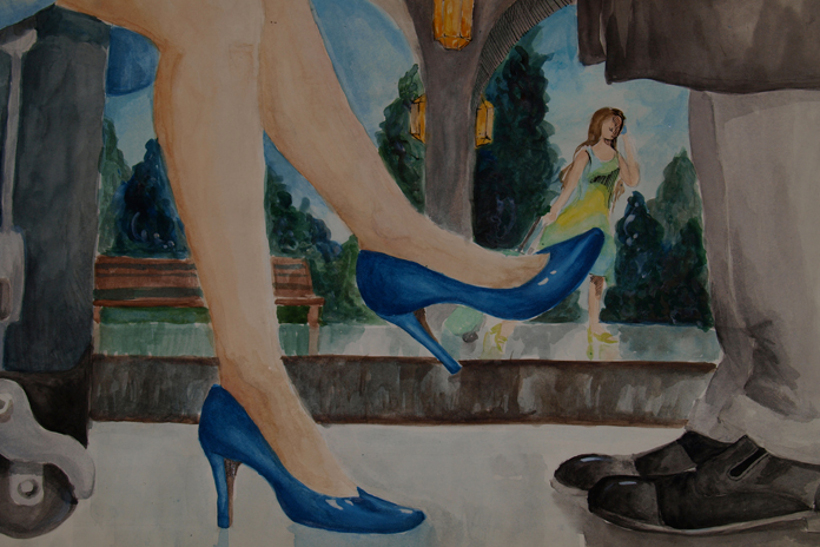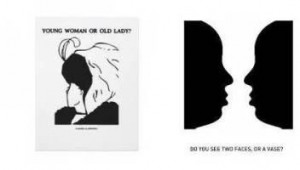Our Changing World
Language Arts - Grade 9
This unit of inquiry is not a recipe book but rather a launchpad to inspire new BIG IDEAS. We encourage you to use and/or modify one, or several of the BIG IDEAS below. Adapt it to the grade/ ability level of your students.
Enduring Understandings
Globalization continues to change our world.
Guiding Questions
How do our perspectives shift and evolve as communities continue to diversify?
Mind Opening
Choose or devise practices to encourage students to be open to new experiences and ways of thinking in your classroom. For example, the MindUP in-school program.
Discovery and Inspiration:
Launch the Project
• Introduce the Theme: Present the Enduring Understanding and Guiding Questions using vocabulary that is appropriate for your grade level.
• About Vancouver Biennale: Play a short video.
• Create Project Space: Brainstorm ideas to make the project theme visual and visible using bulletin boards, and/or a project corner to share relevant materials and inquiry questions and processes.
Reference Resources:
• Introduction to Sculpture and Public Art Unit Plan for information on how art has evolved over time and the unique experience sculptures and/or public art brings.
• Vancouver Biennale 2014-2016 Exhibition Theme: Open Borders / Crossroads Vancouver
• Vancouver Biennale Legacy: Engagement (Dennis Oppenheim, USA)
• About Artist and Artwork (PDF)
Learning to Learn:
Art Inquiry
Make a visit to Engagement and encourage students to freely explore and interact with the art pieces individually and in groups. This Art Inquiry process enables the students to practice observing, describing, interpreting, and sharing visual information and personal experiences. Use the Art Inquiry Worksheet (PDF) ide and capture their ideas and impressions. Customize or create your own Art Inquiry Worksheet as appropriate for your project and class needs.
Have the students discuss the many aspects of relationships that this sculpture portrays. Students may wish to discuss the changing roles of engagement and marriage, the placement of the installation in the heart of the LGBT community, the decreasing influence of religion in relationships and the increasing role of state.
BIG IDEAS Anywhere educators: View the Engagement Guided Tour Video MUTE ON and encourage students to explore at different angles individually and in groups.
Shared Insights
• Sharing Art Inquiry Experience: Ask students to share the Art Inquiry Worksheet responses in class.
• View Guided Tour Video: View the Engagement Guided Tour Video again with SOUND ON.
• Artist Themes – Research: In small groups students rotate between information stations detailing the artist’s life and work. Station topics include: (1) education and training; (2) lifetime of artwork; (2) materials and processes; (3) beliefs and values. At each station, students answer questions and complete a task. For example, at the station “life’s work” students might plot the artist’s various installations on a map of the world.
• Artist Themes – Perspectives: Projecting the images of Engagement, have students begin exploration of changing perspectives by looking at the artwork from different angles, during different time of the day. Ask students to reflect on the different impression to the viewers.
Show two images of optical illusions: reflect on the idea that depending on our viewpoint or perception, how our view can change.
Complete the sentence “—- is most important to me,” keep it anonymous and post around the classroom for a gallery walk. Facilitate comment on each other’s posts.
Inquiry Challenges
Defining Value
Have students explore a broad topic of family/relationships/personal goals/business/education… in a changing world. Collect and list cultural opinions/stereotypes or roles of men/women and contrast these stereotypes with their own perspectives and family background. Findings can be represented visually in a collage/model/written/performance etc.
Media exploration: Have students examine a newspaper, news site or popular entertainment program to compare the portrayal of cultural stereotypes or roles of men and women with their finding in the first part of the challenge or sample newspaper articles from 100 years ago.
Student Creations and Taking Action
Create a Commercial
What does a 21st century family/education/business/ideal/future look like? In small groups, have students create an advertisement as it may be presented in our media today in modern society.
Poetry Performance Night
Have students host a poetry café night where they will invite friends and family to come and hear poetry on what it means to be a man or woman in today’s society. Students can read their original work, or introduce and read the work of a prominent author whose work deals with issues of gender and society.
Reflection
• Teacher and students can reflect on their entire learning process by revisiting the Enduring Understanding and relevant Guiding Questions.
• How did the unit of study open inquiry, create cross–curricular learning opportunities and/or apply learning to real life situations? Has this unit of inquiry changed your opinions, values and world view? In what ways, if any, has it helped you grow as a learner?
Ideas for Cross-Curricular Access
• English – Oral Language: Explain to the students the styles and techniques of Point of View (with the use of video clips to provide examples; a film version of The Diary of Anne Frank would be a good example of First Person POV) and its importance in literature. Students will then be asked to pick one form of point of view and compose a short story. Students could also be asked to create a short story expressing an event from two or more points of view.
• Science: In groups, the students choose a current research topic of interest (e.g. green energy, network, medical research) and look into the scientific progress for the past 20 years. Present in class and discuss the impact of ever-changing scientific findings on the lives of people in different countries (how it changes the perspective of how one views the world).
• Social Studies: Have students examine the evolution of the Canadian government from 1815-1914 and stage a debate on specific changes made in the running of our country. For examples The Railway debate, Immigration Laws and Voting Laws
• Technology – Technology and advancement in human understandings: Pick a specific technological advancement for further investigation on how it has changed the world, and in doing so, our perspective on the people and things around us. Present the findings in class. Some examples: The telegraph, Natural Selection and Aviation
Credits
Written by: Louise Chan and Natasha Randhawa, 2013 UBC Secondary School Teacher Candidates
Edited by: Jennifer Massoud, Secondary School Teacher
©2013 Vancouver Biennale

